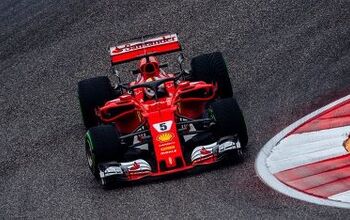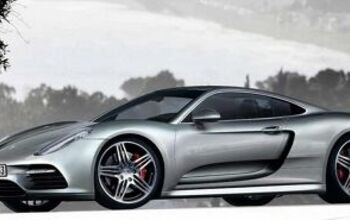Ferrari's Engine Problem
It’s no secret that Ferrari has been wrestling with the inevitable conflict between its bellowing V12s and European emission regulations, but that’s not the only challenge facing the Prancing Horse’s powertrain division. Sure, there’s the increasingly-tenuous link between the Scuderia’s Formula One technology and its road cars [sub], but in the short term that actually helps the emissions issue by creating a pretext for bringing KERS to the road (where it otherwise has little role). In fact, the real issue for Ferrari’s powertrain team is not even a “Ferrari issue” at all, but a Maserati issue.
One of the keys to Maserati’s success as a brand, is the fact that its engines are supplied by Ferrari, a “secret” kept by precisely nobody and referenced in every Maserati review ever written. And considering that Ferrari has to limit its production to 7,000 units in order to maintain exclusivity, it’s not a bad way to build scale on such limited-production engines. The problem is this: with Ferrari unable to grow its volume (instead, focusing purely on profits), Maserati has to. Thus, the new plan to build 40,000 new Maseratis per year by 2014, up from 5,700 cars sold in 2010. About 20k units of that volume are expected to be Kubang SUVs, and the rest will come from two sedans that straddle the current Quattroporte. The Kubang will come with Maser’s 4.7 liter V8, and the two sedans will use direct-injected V6 twin-turbo or V8 engines, also developed and built by Ferrari. Maserati CEO Harald Wester tells evo Magazine (print edition)
Paolo Martinelli [Maserati’s powertrain boss and a previous engine chief for the Ferrari F1 team] is developing these new engines right now in Maranello, and Ferrari will be producing them exclusively for Maserati.
And, admits Wester that will present some serious challenges, as Maserati is talking about a seven-fold increase in engine demand.
If we need 30,000 Ferrari engines, the project is different. The set-up is perfect in terms of quality, but Ferrari will have to do something significant to be able to supply us with the engines we will require in the future.
But how does Ferrari ramp up to make seven times as many engines without losing any quality or exclusivity? Here’s where the story gets strange, as evo reports
Ferrari is already investigating working double shifts in its engine plant as a way to increase production
…and that’s it. Now, I don’t know enough about Ferrari’s powertrain plant to know whether it’s possible to get seven times the volume by switching to a double shift, but it sure sounds like a challenge. And if nothing else, it certainly takes a little of the exclusivity out of the Ferrari brand. But then, a slightly-less exclusive Ferrari is probably more than worth it when you multiply Maserati’s profits margins by 40,000. In any case, we’ll be curious to see how Ferrari manages this situation going forward.
More by Edward Niedermeyer
Latest Car Reviews
Read moreLatest Product Reviews
Read moreRecent Comments
- Lou_BC Well, I'd be impressed if this was in a ZR2. LOL
- Lou_BC This is my shocked face 😲 Hope formatting doesn't fook this up LOL
- Lou_BC Junior? Would that be a Beta Romeo?
- Lou_BC Gotta fix that formatting problem. What a pile of bullsh!t. Are longer posts costing TTAC money? FOOK
- Lou_BC 1.Honda: 6,334,825 vehicles potentially affected2.Ford: 6,152,6143.Kia America: 3,110,4474.Chrysler: 2,732,3985.General Motors: 2,021,0336.Nissan North America: 1,804,4437.Mercedes-Benz USA: 478,1738.Volkswagen Group of America: 453,7639.BMW of North America: 340,24910.Daimler Trucks North America: 261,959

































Comments
Join the conversation
wabbout a Cryco V6 or a pushrod hemi V8 for Maserati ?